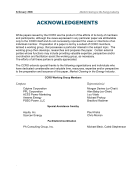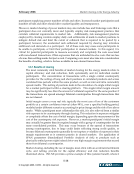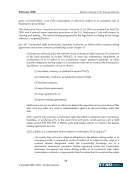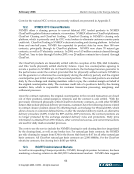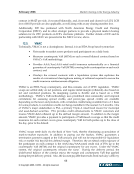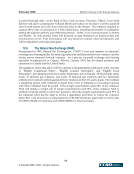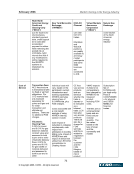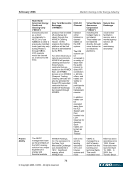February 2006 Market Clearing in the Energy Industry 60 © Copyright 2006, CCRO. All rights reserved. upon Mirant’s business judgment that the PPAs were money-losing contracts. In addition, Mirant commenced an adversary proceeding against FERC and PEPCO and sought, and ultimately obtained two injunctions from the Bankruptcy Court one of which barred FERC and PEPCO from taking any actions to compel Mirant to perform under the Back-to-Back Agreements. Before the Bankruptcy Court ruled on the motion to reject the Back-to-Back Agreements, PEPCO went before the district court and the district court denied Mirant’s motion to reject the Back-to-Back Agreements determining that with respect to electric energy sold in interstate commerce, FERC enjoyed exclusive jurisdiction to determine the reasonableness of wholesale rates or grant rate relief. The district court also refused to grant further injunctive relief, and dissolved the injunctions the Bankruptcy Court had granted, on the theory that those injunctions would impede FERC’s ability to perform its regulatory oversight functions. On appeal, the Fifth Circuit reversed the district court ruling and held that the FPA did not preempt Mirant’s efforts to reject the Back-to-Back Agreements ruling that rejection of the Back-to-Back Agreement would have only an indirect effect upon the filed rate. Of particular relevance to the Fifth Circuit was case law that held that breaches of contracts with FERC approved rates could be litigated outside of FERC, as long as the measure of rejection damages was the FERC filed rate. Although the Fifth Circuit did not rule on whether rejection was appropriate, the Fifth Circuit concluded that the creation of a rejection damages claim based upon the filed rate, and the treatment of that claim under a bankruptcy plan, was less severe than setting aside a contract in its entirety. The Fifth Circuit also found that Congress had created no exception to a debtor’s ability to reject FERC-regulated contracts under §365(a) of the Bankruptcy Code. The Fifth Circuit noted that PPAs are fundamentally different from typical executory contracts because they generally implicate public interests. The Fifth Circuit concluded that courts considering these issues weigh the impact of rejection against the public interest and ensure that rejection does not cause any disruption in the electricity supply to other public utilities or to consumers while noting that FERC participation might be helpful in this regard. The Fifth Circuit also concluded that it was an appropriate use of the Bankruptcy Court’s injunctive power to enjoin actions from being commenced in FERC that could have divested the Bankruptcy Court of jurisdiction so long as the injunction is not overbroad and tailored to the particular circumstances. The Reform Act does not further address this issue.
Purchased by unknown, nofirst nolast From: CCRO Library (library.ccro.org)


